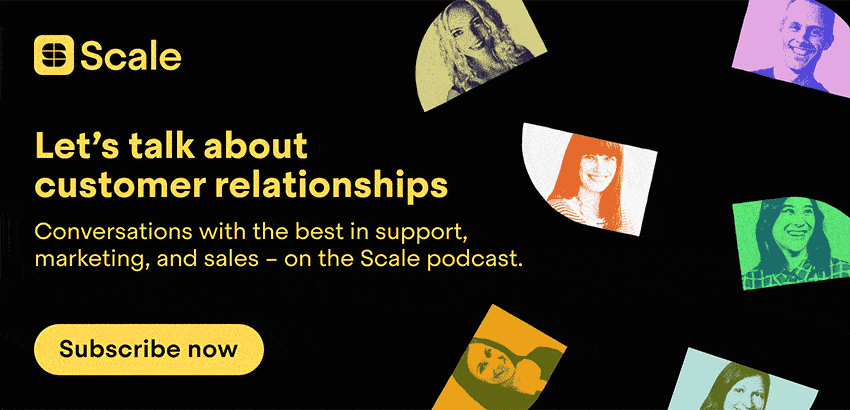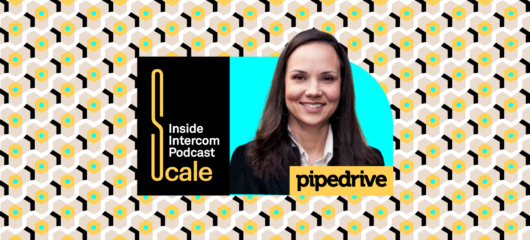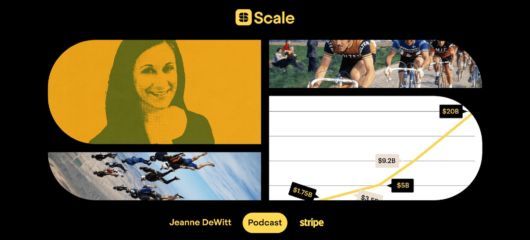
How to kickstart billion dollar companies
Billion dollar companies are not born overnight. Rather, they come from years of arduous work building a customer experience that simply resonates time and time again.
Bangaly Kaba, Instacart’s VP of Growth, knows the typical growth journey for billion dollar companies well. Instacart is valued at nearly $8 billion and since joining, he’s helped to make the company’s services available to more than 80% of U.S. households and 60% of Canadian households. And before Instacart, Bangaly was at another “Insta” (Instagram), where he helped double the photo sharing platform’s monthly users to more than 1 billion.
Even with Instacart’s enormous valuation, he continues to see tremendous growth potential for the service, similar to what he saw in Instagram’s early days. Food is a basic human need – so local grocery stores are not going anywhere. At the same time, online grocery shopping is still a nascent trend, with the opportunity to grow into a $30 billion market.
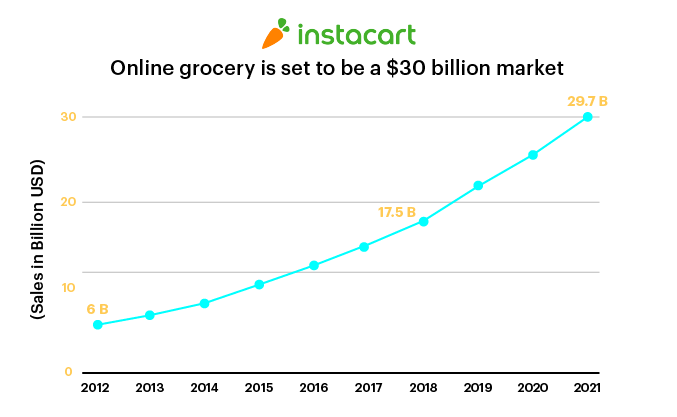
So when you’ve got a massive opportunity before you and a brilliant business idea in hand, how do you begin building a billion dollar business? For Bangaly, you start with the fundamental customer experience – thinking through how you develop customers’ first awareness of your business, encourage their first purchase, and ultimately grow long-term engagement and monetization.
Bangaly discusses all of this and more on the podcast with Brian Kotlyar, our Director of Demand Generation. Listen to the full conversation above or check out some of Bangaly’s key takeaways below.
This is episode eight of Scale, a brand new podcast series on moving from startup to scale up. If you enjoy the conversation and don’t want to miss the rest of the series, just hit subscribe on iTunes, stream on Spotify, Stitcher, or grab the RSS feed in your player of choice.
Perfecting the first activation experience
It’s rarely enough to have a blockbuster idea. If other people can’t grasp the magnificence of your idea when they first encounter your business, your idea will never grow make it out of the starting gates. So how do you get people’s attention?
Airbnb displays its entire catalog of listings on its site, all before a single credit card digit is collected. Foursquare suggests restaurants and bars based in part on your location and the time of day. And once it gets to know you, Netflix seems to know what you want to watch next before you know yourself.
Product researchers and managers call these realizations of value “aha” moments. They’re key to compelling people to give your product a try.
“When you actually understand that ‘aha’ moment, you really have to understand all of the things that can break along the way because delivering the perfect ‘aha’ moment is really, really critical for truly activating your customers”
Bangaly explains the best way to identify your “aha” moment – through building relationships with your most passionate users:
“The way you really truly understand that ‘aha’ moment is by rapid conversations with your customers. I remember when I was doing my own startup where anyone who signed up, we send them an email and say, ‘Hey. Thanks for signing up. We’d love to hear more about what you like about the service. What’s the one thing that you love about the service and what’s the one thing that we can improve upon?’ Maybe two out of every 10 people will reply to you, but the people who reply are really, really fervent, really, really passionate and you tend to find, ‘Oh, this is the thing that really, really, truly matters.’ Once you can understand and find that, you really have to double down on making sure that as many people as possible get to that point as efficiently as possible and then you figure out how to continue to retain them over time.”
But creating that initial intrigue isn’t enough; you then have to fulfill the promise. Bangaly shares how the Instacart team obsesses over how they execute their customers’ “aha” moment:
“How do we get you from signing in and signing up to that first amazing delivery where you can really see the power of getting that first delivery that’s perfectly done and perfectly executed and feeling like, ‘Okay. This is what I really need.’? Once we can really nail that part, the awareness to the first delivery, then we start focusing on long-term retention and engagement.
“There’s a fulfillment side of this. There’s a picking and packing that needs to be done perfectly. There’s the quality of stuff that we choose. And making sure that if something’s out of stock, we can get ahead of that and we can engage the consumer. So, when you actually understand that ‘aha’ moment, you really have to understand all of the things that can break along the way because delivering the perfect ‘aha’ moment is really, really critical for truly activating your customers.”
Building for the marginal user vs. the power user
Getting initial traction with your target customer segment is great, but how do you scale exponentially to billions of users or dollars in revenue?
Take a look at the social giants Facebook and Twitter: they both realized they won’t get to a billion active users simply by optimizing their platforms for the ones who engage multiple times a day. These power users already “get it.”
Rather, the road to growth starts with analyzing what your sometimes-users wanted but weren’t getting. You want to make your product more adoptable by new groups of users. In the case of Facebook, its growth team decided to focus on making it easier for users to find and connect with contacts, after seeing that occasional visitors were having a hard time finding friends and seeing the kind of activity that makes the service so appealing to more frequent users.
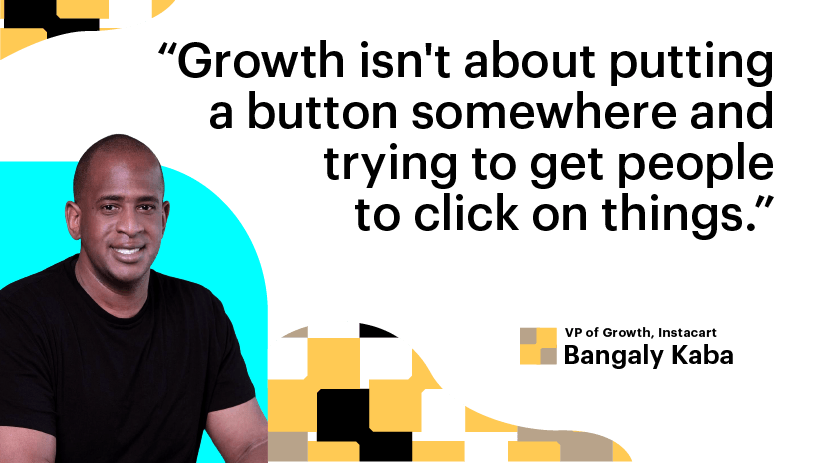
Bangaly brought this approach from his time at Instagram over to Instacart:
“Our mission is to reduce barriers to adoption. When we look at the product at Instacart and previously as I did at Instagram, our job is to understand what are the things that are preventing people from using a product. Why are these things happening, what are the biggest opportunities, and how do we fix and improve the app such that we make it easier for people to use? So, in service of that, we are always thinking about what we will call ‘the marginal user.’ Growth…is really about building things for non-power users because if you’re constantly building things for power users, then new people aren’t going to be able to think about how to join or use your product.”
This focus on the marginal user has recently led the company to launch a pickup experience, as a companion to their delivery service: “If you are head of household, you have one or two kids or you have just a busy schedule, it’s actually sometimes much more convenient for you to pick up groceries on the way back or on the way to one of your errands as opposed to being home for a two-hour window.” Through empathy for this particular group of non-power users, the Instacart team has created a new line of revenue for the business.
Now, it’s not always easy to have a single-minded focus on the end-user. Many businesses work in a complicated ecosystem where they have to manage multiple stakeholders to create and deliver a quality product. For instance, Instacart exists in a four-sided marketplace where the team is constantly balancing the needs of their customers, retailers, shoppers and product advertisers.
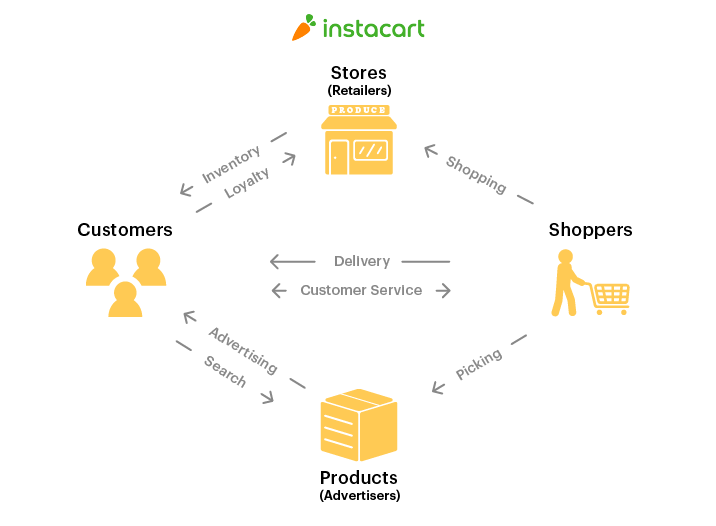
Unlocking the right growth opportunities in a multi-faceted environment comes down to your team’s ability to identify shared goals between competing parties. For instance, the Instacart team places great importance on the goal of their local retailer partners to reach more customers. Helping retailers accomplish that goal ultimately benefits Instacart’s own interests to grow its own userbase. Bangaly notes:
“I’ve learned from my time at Facebook that one critical component is really deeply understanding what’s happening, the challenges for whatever the side of the marketplace you’re trying to address. Whether it’s customers or retailers, figure out how to identify what is the most meaningful thing to solve and really be ruthless about prioritization, both in how you invest resources, but also what you want to really drive, what you want to build …then execute perfectly.”
Monetization requires scale
Perfecting your customer experience and building up a stable user base take time. And time is money, especially for startups. So it’s understandable why many early stage companies are eager to start monetizing.
However, Bangaly cautions against monetizing your product too soon, especially in the B2C space:
“For B2C, definitely start off being free, getting product market fit, figuring out what is the thing that really is the feature, the set of features, the experience that retains people well. [Only then should you start] to focus on growth, once you’ve seen that kind of flatness in retention over 30 to 60 days…Once you start getting some scale, it makes more sense to start focusing on monetization, because monetization really can happen a lot more efficiently and the unit economics make a lot more sense at that point in time.”
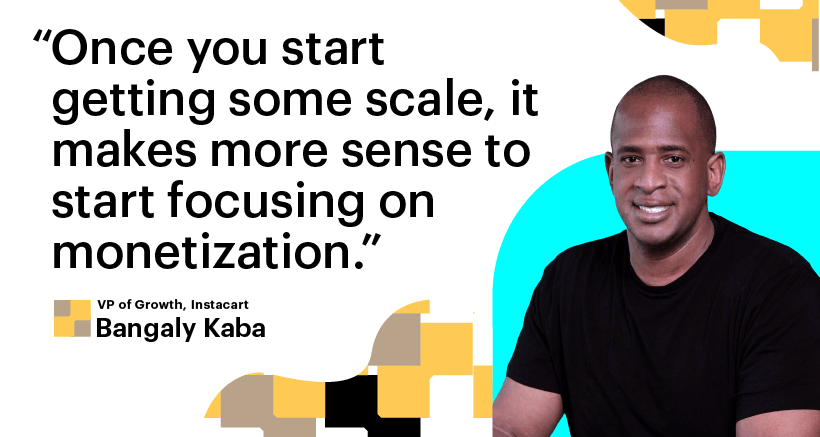
This is not to say Bangaly doesn’t understand the catch-22 that growing companies find themselves in. When you’re on the cusp of breaking through, you feel like you have to pursue every single opportunity to gain traction – yet you likely don’t have the financial resources to do so. Bangaly’s advice? Again, ruthless prioritization.
“Until you truly get some scale, you’re going to have some challenges because you can’t do all the things. Ruthless prioritization is really, really important and if there’s a world in which you want to monetize because you’re going to offer…a premium product, it might actually help your ability to grow.
Bangaly suggests the solution to managing acquisition costs lies with your most passionate customers:
“If you find really loyal customers, a lot of times it makes sense to figure out and use those customers as your north star to understand where do they spend time. What channels do they frequent? What would it take for them to actually refer their friends?”
If Bangaly were to start Instacart today, he would pitch the service to a list of 50 mom bloggers who collectively reach roughly 10 million people and focus on getting those bloggers to experience online grocery delivery. He would work on creating an affiliate marketing program that provides the right incentives for them to easily spread the word to their respective audience. Compared to paid channels, the customer acquisition cost for referrals coming from these bloggers would be drastically lower.
Indeed, the word-of-mouth approach has proven successful for many other businesses. Dropbox grew 3900% in just over a year with its referral program. PayPal gave users real money to invite their friends. The popular email newsletter The Hustle netted more than a million readers – most of whom have been reached through referrals.
So, the secret to kickstarting billion dollar companies? For Bangaly, it comes down to being in touch with your customers and leveraging your insights to deliver a perfect, mesmerizing customer experience.
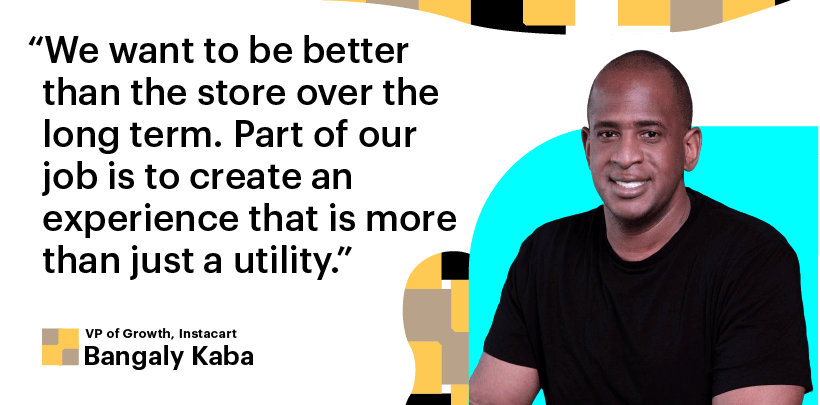
This post is part of Scale, a place where we explore how businesses are driving growth through customer relationships. Scale offers advice and guidance from support, marketing, and sales leaders who are charting new paths for their customers – and their companies.

